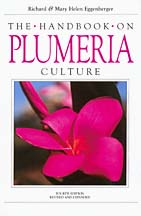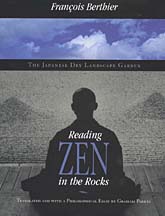Advertisement - Click to support our sponsors.


Dig This![]()
Friday, January 12, 2001

"Growing Gourmet and Medicinal Mushrooms"
Looking like sea anemones, enoki mushrooms grow
out of bottles of sterilized sawdust in Japan.
THREE notable garden books are on the agenda today. They have nothing in common except their authors' passions for their disparate areas of interest. Enjoy. Picks from crop
of garden books

Growing Gourmet and Medicinal Mushrooms
By Paul Stamets, Ten Speed Press, 574 pages, paperback. $39.95 DefinitivE doesn't quite capture the scope of "Growing Gourmet and Medicinal Mushrooms" by Paul Stamets. In just under 600 pages, illustrated with clear and useful graphics and photographs, he covers everything the home or even commercial mushroom grower might want to know.Stamets runs Fungi Perfecti, a mail-order mushroom supply company. He lives in Washington state, where folks know a thing or two about fungus. In addition to being an excellent practical resource, the book allows Stamets to share his philosophical appreciation of the role of fungus in the Earth's ecology.
"The mycelium (a fungal network of threadlike cells) is Earth's natural Internet, a neural network of communicating cells," Stamets writes. He further posits that this network is intelligent and designed to improve itself.
"This book strives to create new models for the future use of higher fungi in the environment," writes Stamets, particularly of the medicinal potential of mushrooms.
"Growing Gourmet and Medicinal Mushrooms," in its third printing, details the culture of 31 mushroom varieties. It covers every imaginable aspect of growing and harvesting.
A comprehensive glossary and clear writing make this a book even the beginning grower can use. And an extensive resource directory lists mushroom festivals, training centers, study tours and associations, among other tools.
The book also includes details on the uses and flavors of different mushrooms, as well as recipes.
Stamets clearly has a passion for his subject and it's tough to imagine a more thoughtful or thorough reference on the fleshy fungus.

The Handbook on Plumeria Culture
By Richard and Mary Helen Eggenberger, Tropical Plant Specialists, 115 pages, paperback. $17.95 Gardeners who get a rash from plumeria sap might be surprised to learn that in India it is mixed with sandalwood oil and camphor to cure itching, and is also used as a counter-irritant for rheumatic pain.Plumeria, or frangipani, is among the most loved of all tropical flowers. The plants are prolific and attractive with dark green leaves and powerfully scented flowers in a range of colors and patterns. Its uses and significance in cultures around the globe are detailed in the fourth edition of Richard and Mary Helen Eggenberger's "The Handbook on Plumeria Culture."
It was in helping to build a botanical garden in India that the Eggenbergers fell in love with the plumeria and began collecting plants from all over the world, including many from Hawaii.
Active members of the Plumeria Society of America, they run a mail-order plant company and write and lecture frequently on flowering tropicals.
The couple's spiritual appreciation of the botanical world frames this thorough reference on plumeria species and cultivars.
The book, which is illustrated with small, helpful photographs, covers nomenclature, history and landscaping, as well as offering a comprehensive culture section. It presents descriptions of plant characteristics and includes a plumeria identification checklist.
Short chapters are devoted to the Moragne hybrids created on Kauai, as well as new and dwarf varieties.
Orders may be sent to Tropical Plant Specialists, P.O. Box 2826, Cleveland, GA 30528. Include $3 shipping per book. "The Handbook on Oleanders," also by the Eggenbergers, is also available at the same price.

Reading Zen in the Rocks: The Japanese Dry Landscape
By François Berthier, The University of Chicago Press, 166 pages, hardcover. $20 François Berthier takes his readers on a guided tour of the Ry-oanji Temple garden in Kyoto in his effort to illuminate the Ja-panese dry landscape garden.He writes: "This garden is disconcerting through its not really being a garden: There is no green of trees to be seen, no scent of flowers to be caught, nor any birdsong to be heard. This desertlike space is enigmatic, an arid area where just fifteen rocks measure themselves against the immensity of the void."
Berthier, a professor of Japanese art and history at Institut Nationale des Langues et Civilisations Orientales in Paris, offers a treat for readers interested in gardening and Eastern philosophy in "Reading Zen in the Rocks: The Japanese Dry Landscape Garden."
He discusses the Chinese roots of karesansui (dry landscape garden); the roles of Daoism, Shinto and Zen Buddhism in its development; and the influence of Chinese landscape painting.
University of Hawaii philosophy professor Graham Parkes translates the French author's work into English. He also adds a prologue and an essay of his own on the "language of stone."
Parkes points out a fundamental difference in the way Eastern and Western thinkers view rocks and stones.
"The ground of this cultural difference appears to lie in the traditional Western dichotomy between the animate and inanimate realms, which has no counterpart in the East Asian traditions."
Parkes also touches on the ecological implications of an appreciation for "inanimate" beauty.
The book includes black-and white photographs of the gardens discussed and a chronology of the dry landscape garden from the 4th century to modern time.
Gardening Calendar in Do It Electric!
Stephanie Kendrick's gardening column runs Fridays in Today.
You can write her at the Star-Bulletin, P.O. Box 3080, Honolulu 96802
or email skendrick@starbulletin.com